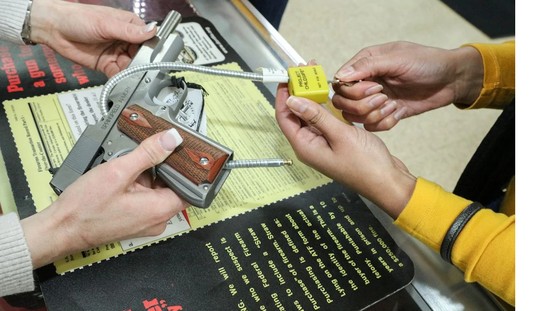When a firearm is recovered at the scene of a crime, law enforcement begins trying to trace those origins. Assuming, of course, the serial number isn’t already listed as stolen. Part of this process involves the ATF. Gun tracing necessarily runs through that particular agency.
Yet it seems the ATF is displeased at the amount of time they have to spend doing their jobs.
Take this report from an Ohio NBC affiliate:
With homicides on the rise in Columbus and other U.S. cities, a major step in the crime-solving process is taking longer than ever before.
One of the most powerful clues in solving a gun crime is knowing where that gun came from, with help from the U.S. Bureau of Alcohol, Tobacco, Firearms and Explosives’ National Tracing Center.
NBC4 Investigates visited the tracing center and found a backlog that’s causing delays in the tracing process nationwide.
Every gun recovered by law enforcement nationwide gets traced at the same facility, the ATF’s National Services Center in Martinsburg, West Virginia.
The facility that is overflowing with growing piles of paper records, while tracing requests pour in in record numbers.
“It’s not just punching the (gun’s) serial number in,” said ATF Program Manager Neil Troppman. “We are piecing together the chain of distribution of that gun from start to finish.”
Honestly, it goes into a lot of the “challenges” the ATF has to deal with, such as no national database of gun owners leading to hardcopy documents, as well as closed gun stores being required to send the documents to the ATF. That has created a huge backlog, to be sure.
Especially since the incoming documents outstrip the agency’s ability to scan them into an easily searchable format.
But here’s the kicker, at least to me.
That, plus the backlog of records, has led to longer turnaround times for non-urgent trace requests, which once took as little as four days. Now, a request could take seven to 10 business days to complete.
“As far as we’re concerned right now, 10 days turnaround time — that’s too long,” Troppman said. “We’re going to get this turnaround time back down again.”
As far as they’re concerned, 10 days is too long.
Well, isn’t that special.
See, it’s interesting because I happen to know that while gun tracing can be useful, it’s also often useless. A gun stolen from someone then used in a crime may not show up in databases of stolen weapons because too few people have serial numbers to provide. So the ATF traces a gun until it gets to Joe Gun Owner, who then points out that he reported that firearm stolen several years previously.
And that’s true of a lot of homicides.
So if gun tracing is so important, how do any crimes get solved? Well, it can be useful, sure, but it’s not all-important. Investigators have all kinds of other resources to draw from. They often catch people long before the often useless tracing data arrives.
And if we’re going to talk about delays, there’s a much bigger story out there. After all, in Illinois, some people have been waiting for over a year for their FOID permit so they can even buy a firearm. If a right delayed is a right denied, then how many Illinois residents are being denied their Second Amendment rights?
There’s nothing in the Constitution about making the ATF’s job easier. There’s nothing in there about the ATF at all, actually.
But there is the Second Amendment which says the right to keep and bear arms shall not be infringed. A year-long delay sure as hell looks like an infringement.
That didn’t come up with the affiliate’s piece about the ATF. Nor did delays that existed in Wake County, North Carolina, or elsewhere in the nation when people had to wait longer than 10 days to get a permit to purchase a firearm.
Let’s be honest, much of the ATF’s issue is that they can’t scan stuff fast enough. If it’s that big of an issue, then maybe they need to reallocate some resources and get caught up. I get that their budget isn’t huge, but that’s on them.
Meanwhile, Americans are being kept from exercising their Second Amendment rights. Honestly, that’s the bigger story, anyway.








